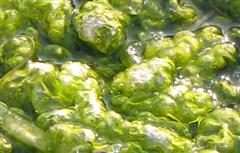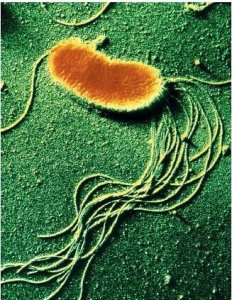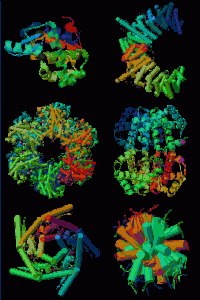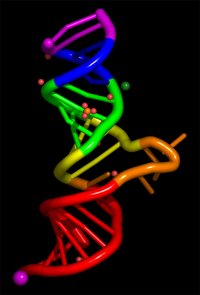Creation: Abiogenesis Part VI
- By: Gregg
- On:
- 4 Comments

A Sunday guest post by my brilliant husband, Gregg.
Every Sunday, my clever husband offers me a “day of rest” by writing posts, usually on the subject of his primary ministry. This topic, Creationism vs. Darwinism, is gaining more and more attention in our modern culture because it is a subject that has broad reaching scientific, social, and metaphysical implications. He chooses to conclude each post with a message intended to hearten and bolster believers. However, for believers and non-believers alike, the primary purpose is to present scientific, historical, logical, and/or sociological data in an empirical fashion, as much as possible written in layman’s terms, and in a format suitable for supplementing any homeschool curriculum whether you choose to believe the Biblical account — or secular guesses — about the origins of human life on earth.
A Darwinian Primer
The 6 types of evolution taught in the average public school, the first 5 being types of Darwinian evolution, and the last being simple modifications or changes within kind and not really “evolution” are:
- Cosmic evolution
- Stellar evolution
- Chemical evolution
- Abiogenesis—Life from non-life
- Macro-evolution
- Micro-evolution (Simple changes within kind – not evolution)
A Few Debatable Words
A few months ago, I began publishing posts on the topic of abiogenesis, or spontaneous generation, or biopoeisis, or whatever Darwinists decide to call the impossible notion that life can spring forth from non-living things fully formed complete with life-saving processes and irreducibly complex mechanisms completely intact and fully functioning — then begin to add information to it’s genome to ultimately result in all life in the known universe. By way of understatement, allow me to observe that it has been an interesting few months.

A number of comments these posts have attracted have simply not been consistent with our commenting policy (to say the least) and have not been published. Since the Darwinists who avidly follow these Sunday posts may not actually be reading that posted policy, I thought I would just sum it up here. Allow me to just lay out a paragraph about the tradition of respectful argumentation.
A methodology of argumentation and a perspective of incredulity are essential ingredients of all intellectual endeavor, including that associated with the art of debate and the natural sciences. Traditio argumentum respectus (tradition of respectful argumentation) as a principled system of assessing the validity of beliefs, opinions, perceptions, data, and knowledge, is worthy of practice and perpetuation, because assessments of validity are susceptible to incompleteness, incorrectness, and misinterpretation. Since the latter may lead to ambiguity, uncertainty, anxiety, and animosity among the individuals (skeptics and advocates alike) who are involved in such dialogue, objective analysis and criteria are desirable. A tradition of respectful argumentation is a means to this end—to maximize objectivity and minimize subjectivity as part of decision-making processes and to preserve the integrity of the participants in the debate or discovery relationship. During such discourse, one ought to always be cognizant of fallacious arguments—material, verbal, and formal fallacies—since they compromise the validity of assertions.
Having said that, including a comment that is nothing more than a stream of profanity, a comment that is nothing more than a nonsensical insult, a “comment” that is nothing more than links to video presentations of other people’s opinions — none of that adds anything to the debate and none of that will find a home here.
To my opponents, if you are so proud of your allegedly superior intelligence and sophistication with respect to your ability to think critically and debate this issue — please display some intelligence worthy of that strongly felt personal pride. Should you wish to respectfully, sincerely, and earnestly express your own deeply held opinion, I assure you that such comments will be published, in perpetuity, for the entire world to see, forever and ever. And such debate is very, very welcome.
Really, it is.
Brief Recap of Abiogenesis
More than a century ago, Louis Pasteur showed that life never arises from non-living material. Yet Darwinists must believe it happened once upon a time. Darwinists estimate the earth to be 4.6 billion years old and the earliest fossils to be about 3.8 billion years old. They believe the earth was once a molten ball of magma. An initially hot Earth might take, say, 0.3 to 0.4 billion years to even become habitable, so the first life took only about half a billion years to magically appear from abiotic (non-living) starting materials.
Where did the Notion Come From?
In Darwin’s day, the height of scientific achievement was the steam engine. No one knew what a cell was and even informed scientists of that day thought cells were essentially organized mud. In a single letter whisked off to a colleague, Charles Darwin scribbled about a “warm little pond” full of phosphates and such and how “If — and oh, what a big if” life could have sprung from such a puddle, then his fantasy of naturalism would prove true. In summary, it was the deluded daydream of a primitive and phobic non-scientist.
Most modern theories of the origin of life date back to the Soviet scientist Oparin in 1924. Oparin took Darwin’s pig of an idea and slapped some utterly unprovable suitably scientific sounding lipstick on it. Oparin’s ideas of a “Primeval Soup” were promoted in the West by fellow communist, J.D.S. Haldane, of Cambridge University.
 In 1953 Urey & Miller published results of a simple and rather rigged experiment in organic chemistry which seemed to lend at least some credence to the “soup” theory. Forty years later, Stanley Miller confessed that the question of the origin of life is much more difficult and complex than he, or anyone else, had thought and while the textbooks don’t mention it, the many problems with the famed Urey & Miller experiment are common knowledge in informed circles.
In 1953 Urey & Miller published results of a simple and rather rigged experiment in organic chemistry which seemed to lend at least some credence to the “soup” theory. Forty years later, Stanley Miller confessed that the question of the origin of life is much more difficult and complex than he, or anyone else, had thought and while the textbooks don’t mention it, the many problems with the famed Urey & Miller experiment are common knowledge in informed circles.
Grasping at straws, others have suggested anything from mid-ocean ridges, to “unknown evolutionary forces,” to lips of volcanoes, to the backs of crystals, to swamp gas bubbles, to toxic puddles, to extreme heat, to an extraterrestrial seeding of the Earth as the origin of life. None of these offer a satisfactory mechanism or any reasonable postulate as to how the FIRST life arose from non-living starting materials — whatever planet upon which that event allegedly occurred.
There is absolutely no evidence that any kind of “Primeval Soup” or “Primordial Ooze” ever existed. There is absolutely no evidence that even if such a magical little warm pond could have existed, that life could have sprung from it via random chance.
The Cell and the Authoritatively Scientific Sounding Proto-Cell
With the developments in the field of molecular biology since the days of Oparin and Haldane, the cell is no longer regarded as simple. The living plasma cell membrane (the “skin” of the cell) allows in or out only specific compounds. It is not merely a semi-permeable structure.
 Cells contain nucleic acids that intelligently carry information throughout the entire organism. They also contain ribosomes where proteins are made using a complex mechanism of nucleic acids and more than a hundred different proteins, each with a specific task, each composed of an average of 400 amino acids arranged in a specifically complex order. The cell also contains mitochondria where energy is produced by adenosine triphosphate (ATP). The complexity of all these parts of the cell is, in a word, enormous.
Cells contain nucleic acids that intelligently carry information throughout the entire organism. They also contain ribosomes where proteins are made using a complex mechanism of nucleic acids and more than a hundred different proteins, each with a specific task, each composed of an average of 400 amino acids arranged in a specifically complex order. The cell also contains mitochondria where energy is produced by adenosine triphosphate (ATP). The complexity of all these parts of the cell is, in a word, enormous.
Darwinists have suggested that the first “proto-cell” (how’s that for an authoritatively scientific sounding word. PROTO-CELL!) assimilated these vastly complex organelles by a process of symbiosis or induction. However, the cell is dependent upon all of these components, and they cannot exist independently of the cell. One such type of organelle, known as a lysosome, contains complex organic enzymes whose function is to digest foreign bodies, which it does with great efficiency. How did a theoretical proto-cell know what foreign bodies were? How did it form with a fully realized and perfectly engineered digestive system that recognized food, processed food into energy, destroyed foreign bodies, and efficiently eliminated waste already intact in just the first generation?
Understand that I am not committing the fallacy of a faulty appeal to incredulity. It is not sufficient to say that “I” or that “No one” can conceive of any way this could have happened. It is a fact that it CANNOT happen. With all the amazingly complex, mutually-dependent, mutually interdependent, and irreducibly complex components contained within, the cell had to be complete from the beginning and from mouth to tail, rather than being assembled bit by bit via random chance over millions or billions of years.
The major biochemicals in living cells are proteins and nucleic acids. No biologically significant proteins or nucleic acids have been made by any experiments such as those of Miller or those who have followed him.
None. Not one.
What those experiments have produced are toxic tars and formaldehyde in addition to glycine and d/l-alanine in approximately equal measure. Darwinists like to say, “You wouldn’t understand. It’s too complicated.” Try me. Looking at that recipe, I fully understand that it will NEVER generate a single useful protein much less anything living. I understand it just as completely as any Darwinist understands it. The difference is, I am not lying to myself.
The Magical Protein
 Proteins are strings of amino acids whose enzymatic activities arise from active groups within a specific three-dimensional shape. These are due to a precise, complex, and highly specific sequence of the amino acids which are folded into each single protein.
Proteins are strings of amino acids whose enzymatic activities arise from active groups within a specific three-dimensional shape. These are due to a precise, complex, and highly specific sequence of the amino acids which are folded into each single protein.
There are twenty amino acids found in proteins that make up metabolic processes, although hundreds of others exist that are not used in metabolic pathways. In the living cell, proteins are manufactured by means of RNA and many other specialized proteins called enzymes. Since proteins are needed to make more proteins, it is not a unsophisticated endeavor to speculate how a first protein (PROTO-PROTEIN!) could either make itself from rocks and dirt and water, or just naturally and magically appear after a lengthy stretch of entirely random occurrences.
Randomness only ever creates simple repetitive order — such as crystalline structures or bubbles– or else randomness creates simple chaos — as in entropy, as is dictated by the second Law of Thermodynamics. It is an irrefutable fact that randomness NEVER creates intelligently arranged order in the form of information, such as that found in DNA.
Pardon Me while I Decipher Technical Jargon
Proteinoids are unstable in the presence of water. Peptization, the joining of the amino acids to form a protein by the elimination of water, is difficult to accomplish by non-biological means and, in laboratories, requires very expensive equipment and careful management of very strict tolerances. Laboratory experiments, such as Urey-Miller, which aim to simulate conditions on a lifeless Earth actually can form messy mixtures of mostly glycine and d/l-alanine and gallons of tar-like poisons or other toxins euphemistically referred to as “organic matter.” Most amino acids found in proteins cannot be synthesized by these experiments, and many never used by living systems do result from these experiments. The tar-like by-products tend to inhibit or poison any enzymatic activity that could potentially form proteins.
It is a fact that a product consisting of exclusively left-handed amino acids never results, and based upon theoretical considerations cannot ever possibly result. Only d/l racemic mixtures are formed. The precise order of amino acids in proteins in cells is governed by information on the nucleic acids that code for them. Proteins cannot replicate themselves. Therefore, so-called “natural selection” cannot be a driving force in their improvement.
The information that codes for the proteins had to have already existed ahead of the need for the proteins themselves to exist. Information simply doesn’t spring into existence if there is no need for it to exist. It takes an intelligent agent to generate the information and put it to good use. None of this could ever be achieved by chance.
Did you say Deoxyribonucleic Acid?
Nucleic acids are found in living cells as DNA, ribosomal-RNA, messenger-RNA and transfer-RNA, each with specific properties. They consist of strings of nucleotides, which are composed of a nitrogenous base, a sugar and a phosphate linkage. DNA carries the genetic information for the organism while RNA is used in protein synthesis. There are four different bases on the double-stranded DNA. The strands are linked by weak hydrogen bonds between bases on each strand. The structure of the bases is such that each in one strand only links with one other type of base in the other strand. One single strand of DNA therefore acts as a template for the other strand during cell replication. Three consecutive bases act as a “codon” to transfer information to specify a particular amino acid, or to start or stop a sequence. This information on a string of DNA (gene) is responsible for the formation of a particular protein. Since there are four bases, there are sixty-four possible codons (43), which pass information rather like the letters and punctuation of a written message. A stereochemical basis for the relationship between any particular three nucleotides that form a codon and the amino acid for which they code has not yet been postulated, yet the relationship exists
 This is a finely tuned and highly precise mechanism. As a carrier of information the DNA molecule is 4.5 x 1013 (45 trillion) times more efficient than a silicon megachip created by teams of human designers working under stringently controlled conditions that enforce very high degrees of tolerance.
This is a finely tuned and highly precise mechanism. As a carrier of information the DNA molecule is 4.5 x 1013 (45 trillion) times more efficient than a silicon megachip created by teams of human designers working under stringently controlled conditions that enforce very high degrees of tolerance.
Furthermore, during protein synthesis information transfer is rapidly checked for random changes known as mutations — which always lose information. Mutations only ever discard information. No mutation could ever lead to an increase of information. This is simple logic and the ultimate conclusion to that logical syllogism is that neo-Darwinism cannot be a mechanism for macroevolution.
Information not only implies meaning, but purpose. This is the exact opposite of chance. It is a tenet of Information Theory that information only ever comes from an intelligent source. Given that this premise is true, the incredibly dense and highly specific information found in genes must have been created.
Darwinists have recently suggested that RNA possesses some of the enzymatic properties of proteins while having the information carrying ability of DNA. The hypothesis is that if one were to posit that the original proto-cell relied on RNA for both functions, this could solve the synthesis problem. Yet no experiment has ever produced anything even resembling a protein, much less RNA. A proto-cell based solely on proteins is patently impossible, since proteins lack the ability to reproduce themselves. Meanwhile, RNA’s enzymatic properties are not sufficiently versatile for even the simplest theoretical proto-cell. For one thing, RNA also does not replicate itself, which is a prime necessity for a living cell. For another thing, the problem of the origin of information on the information carrying RNA remains unsolved. Where did the highly specific information come from?
Defining ATP
Each component of a living cell is breathtakingly complex, yet in isolation it cannot survive nor replicate itself. Even small parts of the components of cells can be unimaginably complex. An example of this is the enzyme adenosine triphosphate synthase (ATP), found in all living cells including animals, plants, fungi and bacteria. The elucidation of the structure of ATP synthase won a 1997 Nobel Prize. Every cell contains hundreds of these miniature motors embedded in the surfaces of the mitochondria.
Each structure is 200,000 times smaller than a pinhead. The motor forges a bond between ADP and phosphate to form ATP. The ATP couples with other processes in the cell requiring energy to reform ADP and phosphate. So energy is directed to contract muscles, beat the heart and drive thought processes in the brain, while the all of the products are recycled. At the centre of ATP synthase is a tiny wheel that turns at about 100 revolutions per second and turns out three ATP molecules per rotation. Just to keep us thinking and walking, humans must recycle their own body weight of ATP each day. Each enzyme is composed of thirty-one separate proteins that in turn are made of thousands of precisely arranged amino acids.
Take away any one of the 31 proteins and the motor is utterly and completely useless. It could not have evolved out of its component parts by either induction or symbiosis. It could not have lain dormant in its component pieces until “unknown evolutionary forces” decided to assemble it since there is no necessity ahead of existence. Now think about this fact. The genetic information and RNA plus hundreds of proteins and specific environment that is required to construct the ATP synthase are in total even more irreducibly complex than the ATP synthase itself.
In short, a factory that builds passenger jets is more complex than any passenger jet. This is a somewhat weak metaphor since, based on orders of complexity, comparing a passenger jet to a living cell is akin to comparing an automobile to a galaxy.
The bottom line is that all the vastly complex and highly specific parts of the cell are necessary to its functioning and replication. Absolutely nothing works until absolutely everything works in concert. This is called irreducible complexity.
The Truth
 The concept of abiogenesis, or spontaneous generation, is absolutely vital to the atheistic Darwinist worldview. It follows, by their way of thinking, that if life can randomly and spontaneously arise under the right natural conditions, then there are perhaps millions of planets in the Universe where life already exists. In some of these places intelligent life may have already “evolved.”
The concept of abiogenesis, or spontaneous generation, is absolutely vital to the atheistic Darwinist worldview. It follows, by their way of thinking, that if life can randomly and spontaneously arise under the right natural conditions, then there are perhaps millions of planets in the Universe where life already exists. In some of these places intelligent life may have already “evolved.”
Billions of dollars have been spent by government sponsored searches for messages sent from an other than earthly origin (e.g., project SETI). The irony is that Darwinists recognize that a highly specific and nonrandom signal from outer space that carried information with meaning and purpose must have come from an intelligent extraterrestrial source. Such a thing is already a foregone conclusion. Yet Darwinists consider nucleic acids in the living cells and scoff.
Nucleic acids contain a nonrandom sequence of nucleotides carrying vast amounts of carefully arranged information with highly specific and precise meaning all exhibiting exquisite purpose. Darwinists consider all that and conclude that it must have somehow arrived by random chance.
The religion of Darwinists is a religion that utterly lacks logic and, often, even intellectual self-discipline. Try this experiment. Any time Darwinists claim that “Evolution Must Have…” done something, transpose the words “Pagan gods must have…” Instead.
Evolution must have somehow formed ATP. Pagan gods must have somehow formed ATP.
Evolution must have somehow formed the first living cell. Pagan gods must have somehow formed the first living cell.
Evolution must have somehow randomly added information to the genome. Pagan gods must have somehow randomly added information to the genome.
The truth is that Darwinism is simple pagan religion masquerading as “science,” as if calling pagan beliefs something they aren’t gives these religious concepts some kind of authority or basis in fact. In matters of informed discourse, it still comes down to faith. Faith in randomness and chaos, worshiping death and violence — or faith in the verifiable and scientifically supported account of God’s creation as described in His holy word.
May God Bless you and yours.
Gregg
Resources:
Additional Posts dealing with Creation and Darwinism
Comments are closed.


Some small points:
“More than a century ago, Louis Pasteur showed that life never arises from non-living material.”
This is an incorrect statement. Pasteur showed that living organisms did not arise from non-living material UNDER THE CONDITIONS OF HIS EXPERIMENT. In no way did he show that life “never” arises from non-living material.
.
On “proto-cell” – I don’t see the problem with this. For people investigating this possibility, they need a name to call the stages before an actual functioning cell is developed when they communicate with each other. Tradiitonally, many scientific words have been taken from the Greek or Latin. “Proto-cell” seems like a reasonable choice.
.
On mitochondria: bacteria and archaea (or archaebacteria) do not have mitochondria. Mitochondria are a fearure of eukaryotic cells. And there is strong evidence that the origin of mitochondria and other cell organelles such as chloroplasts (and IIRC, possibly lysozomes) was a bacterial (or archaean) cell living symbiotically within a different cell type and eventually becoming a single organism. Mitochondria still have some of their own DNA within each mitochondrian but some of the DNA to produce mitochondrial proteins is now a part of the nuclear DNA. (There’s a name for this theory but I have forgotten it.)
.
On the amino acids formed by the Miller-Urey experiment – there was a report in the last few years that some researcher had gone back and re-analysized some of their saved samples with more modern techniques and found more amino acid types than had originally reported. I don’t know if you are familiar with this or not. (Again, I have forgotten the details.)
.
“mutations — which always lose information. Mutations only ever discard information. No mutation could ever lead to an increase of information. This is simple logic and the ultimate conclusion to that logical syllogism is that neo-Darwinism cannot be a mechanism for macroevolution.”
I’m repeating myself here, but this is false.
.
When you look at a cathedral, you don’t assume that that is the first straucture ever built. You look at stone huts and cliff dwellings and imagine even more primitive structures that could not have survived all this time. The cell is like a cathedral in its complexity but it could have been much simpler in the beginning. Even explaining simple cellular mechanisms is very hard, but to expect the proto-cells to have required the whole array of enzymes and structures that are present now seems unjustified to me.
You might want to read about some of Szostak’s work if you haven’t already, to see the kinds of experiments that are going on.
.
(Also I’ll mention the blog of a young earth creationist researcher who works for Bryan College and studies baramins – but who seems to have a better knowledge of current research in genomics and more respect for the evidence for evolution than most young earth creationists: Todd Wood.
Here is his post about evolution which got attention from evolution bloggers and also brought him what sounds like a lot of angry comments from creationists:
http://toddcwood.blogspot.com/2009/09/truth-about-evolution.html
I have to admit I don’t see how he can hold his YEC ideas and keep up with the latest genomic research at the same time – but at least when he talks about biology he seems to understand it more than many people do.)
I want you to know that I genuinely appreciate the intelligence and thought that goes into your comments each week. I am honestly grateful.
That said, here is my rebuttal:
.
Granted. However, it is also true that no one has ever shown that life can arise from non-living material. That has “never” happened. In all of recorded human history, we have only ever witnessed life coming from life. We have “never” witnessed life coming from non-living things. In all of human history, experiments of any kind, parameters, or objectives of any age by anyone has “never” shown that life can come from non-life.
.
The common refutation to the “never” is to say, “Well, it just hasn’t happened yet.” But honestly, it is safe to say that some things simply cannot happen. If I were to say that full grown alligators are supposed to fly out of every elected official’s hind end, you might say that will “never” happen. You can point out that it has never happened in the past, in all of recorded human history, and deductively assume with a high degree of assurance that the trend will continue. Never = never. It has never happened. It will never happen.
.
It really isn’t fair for me to turn around and say, “It just hasn’t happened yet! You just wait and see!” That isn’t even a reasonable argument. It’s more like a childish rationalization without basis in logic or fact. If the impossible event has never happened in all of history, and no science or strong evidence shows that it could reasonably take place, it is pretty safe to settle the question with a “It will never happen” type of answer.
Therefore, I feel safe to say it never happened and will never happen.
.
.
Why not call it “imaginary cell” even as mathematicians refer to “imaginary” numbers? If we have a love for dead languages in our nomenclature, why not call it a hypothe-cell — as in hypothetical cell — since it is entirely a product of inductive reasoning and hypothesis, without any evidence in the real world? Either of my suggested terms would be more accurate, but either would also put the alleged existence of such an imaginary organism in doubt based on simple connotation. Much better to use a more authoritative and scientific sounding phrase, I suppose.
.
I grant you that this point is nit-picky, but it remains a valid point in my opinion, because of the spin involved in the connotation of phrases like “proto-cell” and “proto-star” to the average layman.
.
.
I am not convinced that there is strong evidence. Just as if the only tool in your toolbox is a hammer, then everything you see looks sort of like a nail: If you believe, deep down in your heart of hearts, that Darwinian evolution did it – then every answer to every question of origin leads to the Darwinian evolutionary assumption. There may well exist some very strong interpretations of weak evidence based on a Darwinist worldview. The Darwinist worldview colors the way any evidence is interpreted, but what if the base assumption is dead wrong? Completely and utterly wrong? Then what? You cannot stand on the shoulders of others when the bottom of the pyramid has feet of clay.
.
.
I am unfamiliar with this report, however I feel confident that if any of the recently uncovered amino acids found in the original samples were of the 20 used by living organisms in protien sythesis, that would have been widely reported.
.
Also, the problems with the Urey-Miller model are well documented. It is not even a valid experiment.
.
.
I do not see you and I coming to any kind of agreement on this point.
.
I have to say that I REALLY like this metaphor considering that all buildings from cathedrals and small huts are ALWAYS created by intelligent agents who carefully plan, design, then make the structures.
.
I think your allegory actually greatly supports my point(s). People tend to think of single cells as simple grass huts — they are not. They are incredibly complex. Even so, even simple grass huts do not build themselves from nothing based on random chance over millions or billions of years and then grow into cathedrals through a series of gradual changes — and niether do cells. Buildings are intelligently planned, designed, and then created by makers. I believe that living things were likewise created.
.
Thank you for the reference to Szostak’s work. I will absolutely look into it. Thank you also for the reference to Mr. Wood.
.
And thank you again for your comment and God Bless you.
Gregg
Thanks, I appreciate that.
.
I think on the question of whether it’s reasonable to say ‘never’, you and I will never agree. (But at least you can agree that Pasteur’s work didn’t show that.)
.
On your response about the mitochondria – how do you avoid that problem yourself?
.
The information is consistent with the idea that mitochondria are descendants from free-living bacteria. You have no way, at least that I can think of, of to make it consistent with special creation. You have the general ideas that the Creator could have done it any way at all (no way to predict what those ways would be), but OTOH could have done it in some way that makes logical sense to humans (the apparent tree of life similarities), and finally, could have altered everything in possibly negative ways after the Fall. These approaches give creationists a lot of leeway in explaining how things came to be. But it seems difficult to me to go from those very general starting points and to get to the peculiar arrangement of the DNA for mitochondria and chloroplasts, where some DNA is in a circular DNA plasmid typical of bacteria within the organelle and some is in the nuclear DNA. (And there are examples of mitochondrial DNA in the nuclear genome which serve no purpose.)
.
It may be that we will never agree about mutations. I hope I will be able to come up with better examples though.
.
I looked at the brief article on the re-analysis on the Miller-Urey samples and you were mostly right. They analyzed samples from three types of experiments. Although there were types of amino acids which hadn’t been measured originally, it looks like only one of the new ones was from the twenty standard amino acids – phenylalanine.
.
On my analogy with the cathedral: despite the intelligence of the builders, at each time point they were limited by the materials and skills they had developed up to that point in each of their communities. And there was a selection process for the techniques and designs depending on what was successful, economical, sturdy, appealing to the community in which they were used.
That is a fair question. I should say it is because I used to be an avid Darwinist myself. Therefore, I feel I have some practical knowledge/experience with the thought processes that occur from that worldview. If you are implying that I have a Christian worldview that affects my objectivity, I am not sure that is entirely true, although I am sure some judgements are colored by my worldview. However, I strive to remain objective and rational, highly logical, and am willing to take in evidence on its face for what it’s worth.
.
It is only consistent with that idea if the premise is sound. Otherwise, it is a false assumption based on a false assumption.
.
Again, buildings are made by intelligent agents. They do not make themselves. Mud huts do not make themselves. Cathedrals do not make themselves. They are all designed.
.
Mud huts do not make themselves naturally through random processes over millions or billions of years. Nothing that is designed makes itself, no matter how long you sit and wait for it to happen.
.
Mud huts do not evolve into cathedrals or sky scrapers over time through a process of small, gradual changes and natural selection.